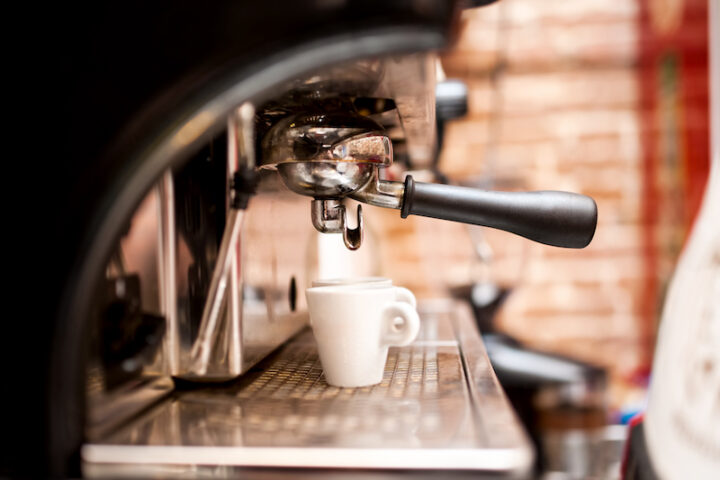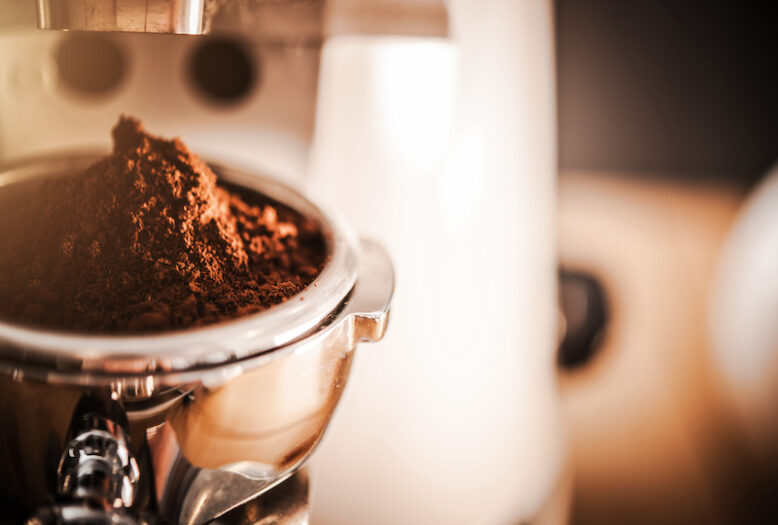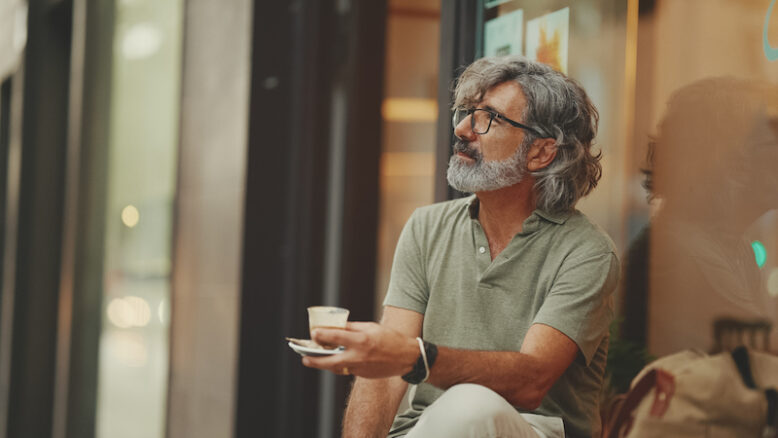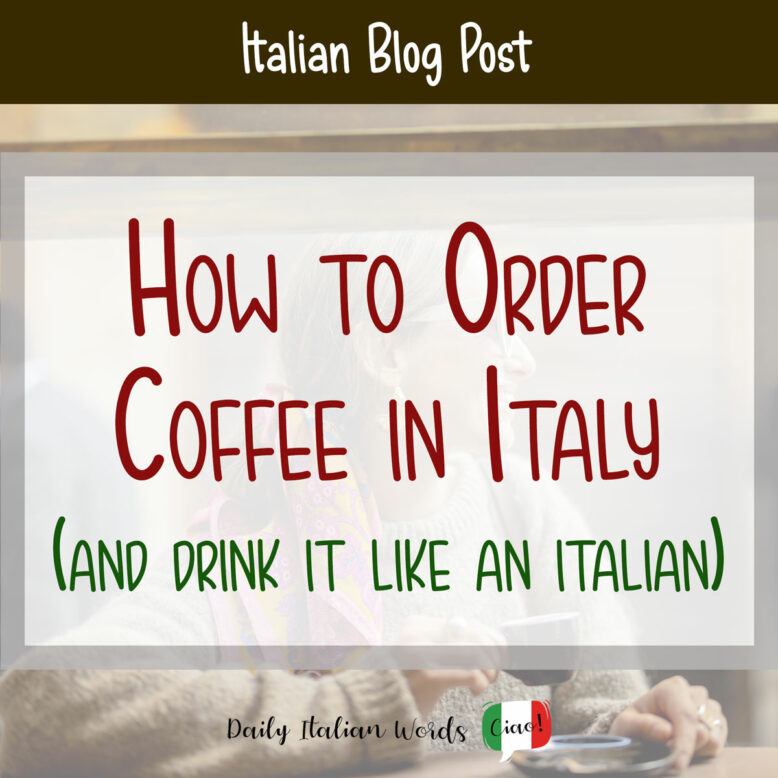Coffee is not just a beverage in Italy; it’s a way of life. The Italian coffee culture is deeply rooted in the country’s traditions and daily routines. And it’s something that every visitor should experience.
That’s why you need to know how to enjoy coffee in Italy, starting from the words to use, the choice of the coffee types available, the etiquette to follow, and the best brands to try. Ready for it? Then, let’s dive into the aromatic world of Italian coffee.

How to Order a Coffee in Italian
When you step into an Italian bar, the first thing you need to know is how to order a coffee. In Italy, when you ask for a “caffè,” you’ll get an espresso, as it is the standard coffee that most Italians drink. If you want a double espresso, you should order a doppio. But, be aware that ordering an espresso or a doppio espresso might reveal your tourist status.
To order a coffee you can say:
Un caffè per favore!
A coffee please!
Vorrei / posso avere un caffè per favore?
I’d like / Can I have some coffee please?
Indeed, as it is pretty common for Italians to mean espresso with the word caffè, all you need to say when you ask for a coffee is:
- Un caffè (espresso)
- Un doppio (double espresso)
- Un lungo (generally, a little cup of coffee filled almost to the edge)
If you want to go beyond ordering a basic coffee, you’ll need to know the common types of coffee in Italy. Some of the common names for Italian coffees include:
- Lungo (a long shot)
- Corto (a short coffee)
- Ristretto (restricted coffee)
- Macchiato (espresso with a splash of milk)
Unfortunately for those who love americano coffee, it’s usually not on the Italian menu. You’ll now find it available in many places, but it’s only made for tourist purposes. Nobody, except very few people, drinks americano in Italy.
For this reason, to experience real Italian coffee, try to avoid americano, as it is not something typical. Most of all, avoid coffee chains such as McCafé or Starbucks. Indeed, although they adapted their products to Italian tastes, they don’t represent the Italian tradition at all.

How Italians drink coffee
Drinking coffee in Italy is an art, and there are some rules to follow if you want to blend in with the locals. First, Italians usually drink coffee standing at the bar. It’s a quick, social activity, not a long, sit-down affair.
Remember, cappuccino is typically consumed only in the morning, with many Italians considering it a faux pas to order one after 11 am. But don’t despair, they’re getting used to foreign customs in the main cities. So, if you can’t live without it, go ahead and have it.
Italians often enjoy their coffee with a sweet pastry, like a cornetto, which is like a croissant. But be careful, this happens only in the morning for breakfast.
During the day, people drink coffee as a social habit, to share moments of the day and meet with friends. Especially in Southern Italy, coffee is always offered to guests that come for a visit: it’s more than a rule, it’s like a sacred dogma.
Lastly, when it comes to paying for your coffee, there are two ways. You can either pay before you get your coffee or pay after you drink it. The most common way is to order, drink, and, only then, pay.

Types of coffee in Italy
There are several types of coffee you can enjoy in Italy. Here are a few of the most popular ones:
- Espresso: This is the standard coffee in Italy. It’s a small, strong shot of coffee served in a small cup.
- Cappuccino: This is an espresso with steamed milk and foam on top. It’s usually consumed in the morning. And many times, it is presented with latte art, that is with a decoration on top and a sprinkling of cocoa upon request..
- Macchiato: This is an espresso with a small amount of milk.
- Caffè Latte: This is an espresso with a lot of milk, like a latte in other countries.
- Caffè Corretto: This is an espresso with a shot of liquor, usually grappa, anise or sambuca. In the summer, you should try it “corretto” with Bayleis Irish cream and ice.
Each of these coffees offers a unique taste and experience, so don’t be afraid to try them all. But differently from America and the United Kingdom, remember that coffee sizes are smaller in Italy, and for good reason. Coffee, as drunk in the Peninsula, is very strong, and such big cups as English or American ones would give you more than a pleasant buzz. So, don’t expect a large cup like you might get at Starbucks.
Drinking coffee in Italy
Drinking coffee in Italy is a daily ritual. It’s common to start the day with a quick espresso at the local bar before heading to work. For mid-morning, Italians might take a short coffee break, known as “pausa caffè.” After lunch, another espresso is common to help digest the meal.
In the afternoon, Italians might enjoy a second or even third coffee break, in the company of a light snack that can include a sweet treat and a coffee. After dinner, Italians call it “caffè digestivo,” used to help digestion. It may also be a “caffè corretto” with a shot of liquor, or otherwise, only a small shot of local liquor, such as “grappa”. As you can see, coffee is also used to mark the time of day.
How should coffee taste according to Italians
It’s no news that whenever Italians venture beyond their borders, they often struggle to find what they consider a good cup of coffee.
This happens because many Italians find the coffee served in global coffee chains to be a poor imitation of the real thing. The coffee in these chains often tastes scorched or too watered down to an Italian palate. On the contrary, Italians are used to the smoother and more robust flavour of traditional Italian espresso.
A coffee made in an Italian bar typically uses around 7 grams of ground coffee for an espresso, with not much variation among bars. Speciality coffee shops may use more coffee, yielding a more intense coffee as a result.
The cup of coffee must be almost dense, with a little foam on the top, and with an intense black colour fading, at the top, into golden brown. The smell is part of the ritual: strong, enveloping, fragrant.
Globally, what is thought to be Italian espresso culture is only a caricature of the true one. James Hoffmann, an award-winning barista, confirmed this too. Things, when exported, change in a way to please local palates. This kind of evolution has occurred in many other Italian cuisine specialities, that at times, are not even recognized by Italians as such.
Italians, although less than in the past due to the widespread use of coffee machines, have always had a moka in their houses. It’s as essential to the Italian kitchen as the kettle is to the British one. It’s used to brew a strong, rich coffee that is much stronger than the newest coffee machines. Something unchangeable and intradeable, for no other coffees or machines in the whole world.

Coffee etiquette in Italy
When it comes to coffee etiquette in Italy, there are a few rules to keep in mind. First of all, if you’re in a bar, which is what Italians call coffee shops, you should order and pay at the counter.
Often, you drink your coffee standing at the bar. Remember that sitting down at a table usually costs more, and you can be charged for an extra service.
As already said, milk-based coffees like cappuccinos or caffè latte are typically consumed only in the morning. Ordering a cappuccino after a meal or in the late afternoon might earn you some strange looks.
Moreover, when ordering, keep it simple. Italians usually just order an “espresso”, which, as we’ve already discussed, they call “caffè”, or a “cappuccino.” There’s no need for the long, complicated orders you might be used to in other countries. Order, drink, and just relax.
There’s no need to rush as Italians do as you are there on holiday, and you can take all the time you need to drink your coffee. But if you happen to drop by Naples, remember that you can pay for an extra coffee and leave it for someone else. Generally, someone who doesn’t have the money to buy it. This custom is called “caffè pagato” (paid coffee).
How much is a cup of coffee in Italy?
The cost of a cup of coffee in Italy can vary a lot depending on where you are. In general, you can expect to pay between 1 and 1.50 euros for an espresso if you drink it standing at the bar. If you sit at a table, the price can go up to 3 euros or more. For instance, close to the “Duomo” of Milan or in San Marco Square in Venice, you can be charged even 5 euros or more.
In touristic areas, the prices are higher, and some places charge more for certain types of coffee. Remember that in any case, cappuccino, especially if made with latte art, costs more than a standard coffee. In some coffee shops, you can find it for 3 or 4 euros.
It’s also worth noting that in some places, as already anticipated, there’s a “coperto” charge, which is a cover charge for sitting at a table. This can add a few euros to your bill.
Be aware of where you take your coffee then, and remember that the real traditional coffee, most of the time, is found outside the most touristic places. And, generally, you pay a very small price for it.

Famous coffee brands in Italy
Italy is home to some of the world’s most famous coffee brands. Lavazza, for instance, is one of the most well-known Italian coffee brands, and it’s often referred to as “Italy’s Favourite Coffee”.
The company manufactures 17 brands and products, including Lavazza Oro, Qualità Rossa, Caffè Crema e Gusto, Crema e Aroma, Dek (decaffeinated), and Lavazza Blue.
Other famous Italian coffee brands are:
- Illy
- Segafredo
- Kimbo (Made in Naples)
- Borbone
- Pellini
- Vergnano
- Toraldo
Each of these brands offers a range of products, from whole-bean coffee to ground coffee to coffee pods.

Conclusion
Coffee in Italy is more than just a drink; it’s a cultural experience. From the moment you step into a bar and order your first caffè, you’re joining a tradition that’s deeply rooted in Italian life. Whether you’re sipping an espresso at the counter, indulging in a cappuccino with a cornetto for breakfast, or concluding your meal with a caffè corretto, you are guaranteed to relish the rich flavours and traditions of Italian coffee.


Fabio Guarino is a Linguist and Language Specialist who operates as a Freelance Content Writer and SEO Marketer. He considers himself fortunate to be able to blend his passion for his native language, Italian, along with English and Spanish, with his career.


